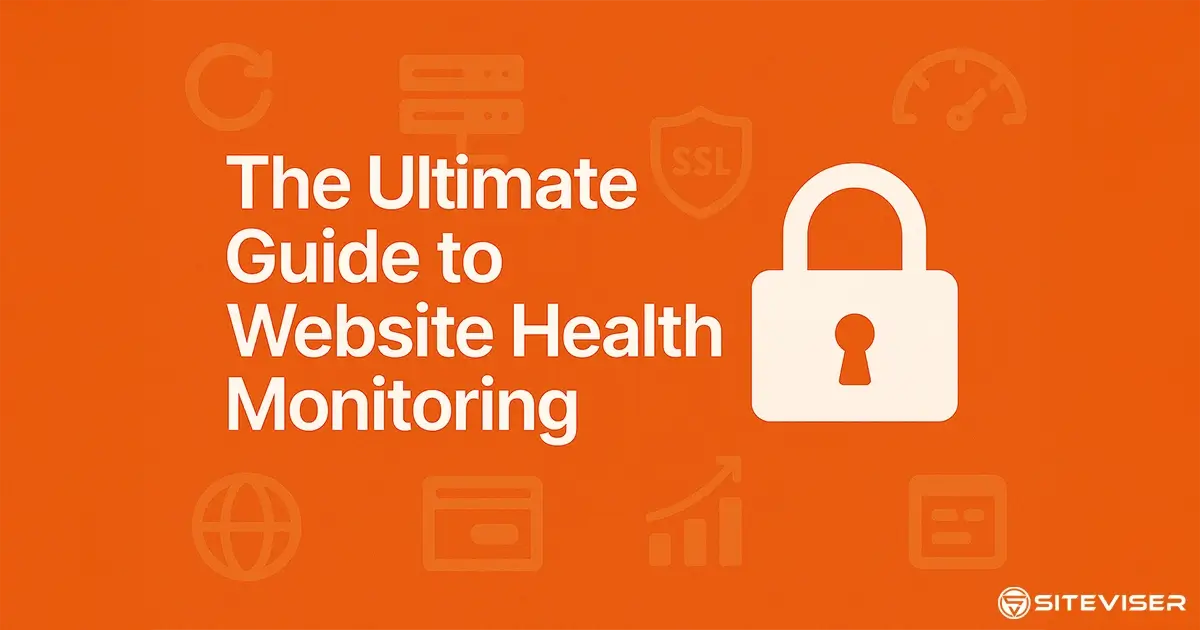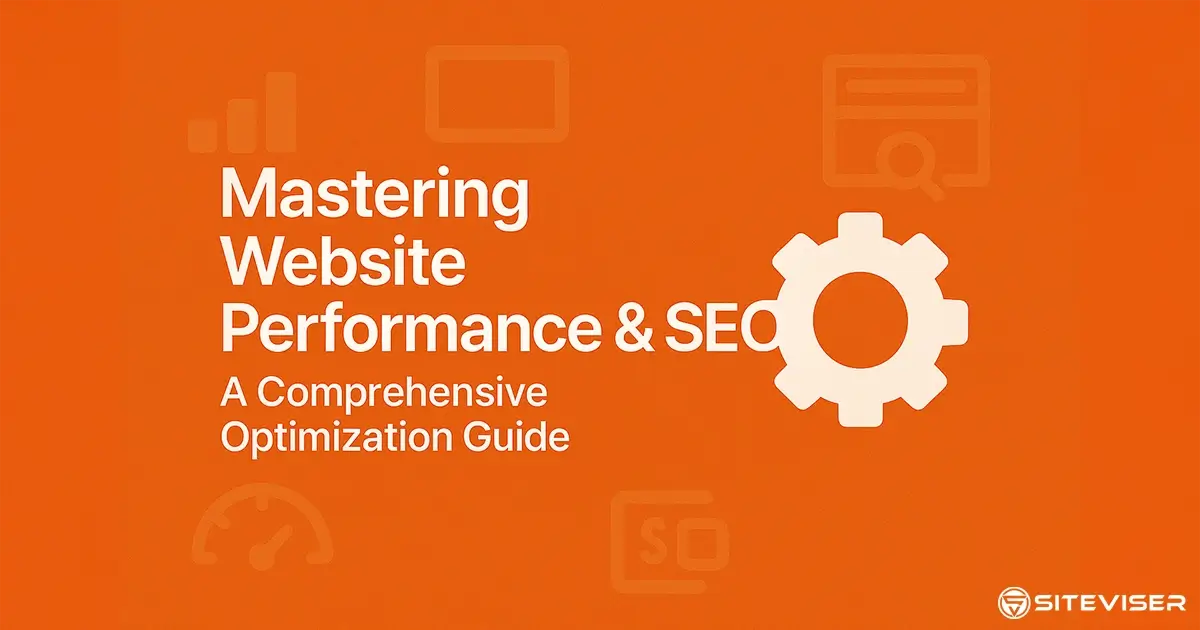Your website is often the digital front door to your business or project. Like any critical asset, it demands regular check-ups to ensure it's performing optimally, securely, and effectively reaching its goals. Neglecting website health can lead to significant consequences: lost revenue, damaged reputation, frustrating user experiences, and missed opportunities. This ultimate guide delves into everything you need to understand about website health monitoring – its critical importance, the essential areas to track, common oversights, and the path to proactive management.
Why is Website Health Monitoring So Crucial?
Consider website health monitoring as essential preventative care for your online presence. Implementing a consistent monitoring strategy allows you to:
- Prevent Costly Downtime: Identify and address potential issues before they take your site offline, safeguarding revenue streams and user access.
- Protect Your Brand Reputation: Ensure a seamless, professional, and reliable experience for every visitor, building trust and credibility.
- Enhance Security Posture: Detect critical vulnerabilities early, such as expiring SSL certificates or damaging blacklist entries, before they can be exploited.
- Maintain and Improve SEO Performance: Keep track of vital factors influencing search engine rankings, including site speed, mobile-friendliness, and indexability.
- Avoid Operational Failures: Guarantee that essential functions like contact forms, checkout processes, and key content remain accessible and functional.
- Optimize Resource Allocation: Understand that proactive monitoring is significantly less stressful and resource-intensive than reactive emergency fixes.
In short, consistent website health monitoring provides invaluable peace of mind and actively protects your digital investment.
Key Pillars of Comprehensive Website Health Monitoring
A truly healthy website requires diligent attention across several interconnected domains. Here’s a detailed breakdown of the essential components included in a robust website monitoring checklist:
1. Domain Health & Registration
Your domain name is your unique digital identity. Overlooking its status can have catastrophic results.
- Expiry Date Monitoring: This is paramount. Allowing your domain to expire means instantly losing your website, associated email addresses, and potentially having competitors or squatters register it. Vigilant tracking is non-negotiable.
- Registrar Information Accuracy: Knowing your registrar and ensuring your contact details (especially email) are current is vital for receiving renewal notices and managing your domain effectively.
- Domain Lock Status: Activating registrar lock prevents unauthorized or accidental transfers of your domain name, adding a crucial security layer.
2. Hosting & Server Infrastructure Insights
The environment where your website files reside directly impacts its speed, reliability, and even email deliverability.
- Server Location Awareness: Understanding the geographical location of your server helps assess potential latency issues for international visitors.
- Mail Server Configuration (MX, SPF, DKIM): Proper setup is critical for email deliverability. Incorrect configurations often lead to emails being marked as spam or rejected entirely.
- Hosting Provider Identification: Knowing who hosts your site is fundamental for seeking support, troubleshooting performance issues, or planning migrations.
3. SSL Certificate Validity & Security
The padlock icon (HTTPS) signifies trust and security. Its absence or malfunction is a major deterrent.
- SSL Expiry Date Tracking: Like domains, expired SSL certificates trigger alarming browser warnings ("Not Secure"), driving visitors away and negatively impacting SEO rankings. Continuous monitoring is essential.
- Certificate Details & Chain: Understanding the certificate type (DV, OV, EV), the issuing authority, and ensuring the intermediate certificates are correctly installed prevents trust errors.
- Correct Installation & Configuration: The certificate must cover the intended domain(s) (including www vs. non-www variants) and be configured with modern security protocols.
4. Uptime & Availability Monitoring
If your website isn't accessible, its content, features, and purpose are irrelevant. Availability is foundational.
- Monitoring Frequency & Type: Frequent checks (e.g., every 1-5 minutes) using methods that verify actual website content loading (HTTP/HTTPS checks) are more reliable than simple pings.
- Instant Downtime Alerts: Receiving immediate notifications via email or other channels when your site becomes unavailable is crucial for minimizing the duration and impact of outages.
- Response Time Tracking: Monitoring server response times can preemptively indicate underlying issues (like resource strain) even before complete downtime occurs.
5. Website Performance & Speed Analysis
Slow-loading websites lead to user frustration, higher bounce rates, and penalties from search engines.
- Page Load Time Metrics: Measuring how quickly your pages render and become interactive for users (e.g., LCP, TTI from Core Web Vitals).
- Core Web Vitals (CWV): Monitoring Google's key user experience metrics (Largest Contentful Paint, Interaction to Next Paint, Cumulative Layout Shift) is vital for SEO.
- Server Performance Indicators: Tracking Time to First Byte (TTFB) helps diagnose server-side bottlenecks affecting initial response speed.
6. Blacklist Status Monitoring
Being listed on major IP or domain blacklists can severely hinder website access and cripple email communication.
- IP Address & Domain Reputation Checks: Regularly verifying against prominent spam, malware, and phishing blacklists ensures your server IP and domain maintain a clean reputation.
- Understanding Listing Causes: Blacklisting often results from sending unsolicited emails (sometimes due to compromised accounts), hosting malicious content (knowingly or unknowingly), or poor server security practices.
- Assessing the Impact: Consequences range from emails landing in spam folders to complete website blocks by security software or search engine warnings.
7. DNS Integrity & Change Tracking
The Domain Name System (DNS) acts as the internet's phonebook. Incorrect or maliciously altered records break access entirely.
- Key Record Monitoring: Continuously checking critical DNS records (like A, AAAA, CNAME, MX, NS, TXT) for unauthorized or unexpected modifications.
- DNS Change Alerts: Receiving immediate notifications if vital DNS records are updated helps quickly identify potential hijacking attempts or configuration errors.
8. Search Engine Indexing Status
Ensuring your site is visible and correctly indexed by search engines like Google is fundamental for organic traffic.
- Indexability Checks: Verifying that search engines can crawl and index your important pages without encountering blocks (e.g., via robots.txt or noindex tags).
- Basic SEO Health Signals: Monitoring ensures foundational elements required for search visibility are in place.
Common Pitfalls in Website Monitoring Practices
- Over-Reliance on Manual Checks: This approach is inconsistent, extremely time-consuming, prone to human error, and simply not scalable.
- Ignoring Renewal Reminders: Missing domain or SSL renewal dates due to overlooked emails is a simple yet devastating mistake.
- Lack of Actionable Alerts: Monitoring data without setting up immediate, clear notifications for critical issues negates the primary benefit.
- Using Fragmented Tools: Juggling multiple logins and dashboards for different checks is inefficient and increases the chance of missing something important.
- Dismissing "Minor" Warnings: Seemingly small performance dips, configuration warnings, or brief outages can be precursors to larger problems.
The Advantage of Automated Monitoring Solutions
Leveraging automated website health monitoring platforms provides significant benefits:
- Unwavering Consistency: Checks run automatically around the clock at predefined intervals, ensuring nothing slips through the cracks.
- Proactive Alerting System: Instant notifications are dispatched via preferred channels the moment an issue is detected, enabling rapid response.
- Centralized Management Dashboard: Consolidate monitoring for all critical health aspects – domain, SSL, uptime, performance, blacklists, DNS, and more – into a single, easy-to-understand view.
- Significant Time & Effort Savings: Automate tedious manual checks, freeing up valuable time and resources for core business activities.
- Data-Driven Insights & Reporting: Track performance trends, identify recurring issues, and generate reports to demonstrate website health over time.
Conclusion: Invest Proactively in Your Website's Wellbeing
Proactive website health monitoring is not merely a technical task; it's a fundamental business practice for anyone serious about their online presence. By understanding the key pillars – domain integrity, SSL security, continuous availability, optimal performance, blacklist avoidance, and DNS stability – and embracing automated monitoring, you effectively shield your website, ensure a superior user experience, and maintain focus on your strategic objectives with confidence.
Ready to gain full visibility and control over your website's health?
Discover SiteViser Today!

